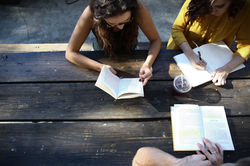Podcast
- Wong Kin
- Nov 15, 2018
- 3 min read
Updated: Nov 16, 2018
Podcast:
Script:
Reflection:
Shipka emphasizes that a good sound-based work is no different from a quality argumentative essay – it should be purposeful, rigorously crafted, or soundly constructed. He further argues that to produce such sound-based academic work, one should begin by identifying the purpose of the work: what, specifically, is this piece trying to accomplish? For whom? In what contexts? Therefore, it was imperative for me to begin brainstorming the idea for the podcast by ascertaining the intended effects of the podcast and determining the target audience. Only by doing so, I could move on to researching and deciding on the various rhetorical devices and sound effects I could deploy to achieve those effects.
The purpose of my podcast is to introduce Singapore through a sound-based tour to my peers here in College. I think a lot of my peers here perhaps only heard about Singapore in news reports about some of the controversial issues in the country like the chewing gun ban or the death penalty. Others might know a little more about Singapore based on the recent Hollywood hit Crazy Rich Asian. But there is a lot of interesting things about Singapore like how it transformed from a third-world country to a first-world country in just thirty years, or how it is a melting pot for both the eastern and western cultures. But I did not want to produce another Wikipedia article about Singapore in the form of sound. I wanted my podcast to be less of a narration of linear, printed based text. I hoped to give my audience an immersive experience through special effects that audio can offer.
I began my podcast with a sound clip of a plane landing in Singapore and the cabin crew announcement. This clip immediately introduces my audience with the context of my podcast, which is a tour of Singapore. Next, I deliberately added in a short interval of silence before the next clip. The purpose of this soundless-ness is to create some suspense for the audience such that they become more expectant of what is to come. By doing so, I am making the audience more susceptible to the feelings and emotions that I would be invoking through the subsequent parts of the clip.
Next comes the main content of my podcast. In this part, the “tour guide” introduces each place briefly and highlights the more interesting aspects of each site. I have used numerous sound effects in this part of my podcast. The more important sound effects include: a sound clip of commuting in a car, the sound of footsteps, and various animal sounds when visiting the zoo. All of these sound effects aim to create that whole immersive experience where the audience are transported to the reality created by the sound-based tour. The tour is not just a passive narration by a commentator. It is that much more than that: the audience should feel as if they were actually at the scene if they close their eyes and listen attentively.
Finally, the main lesson that I draw from this assignment is the difference between a piece that is made to be heard and a piece that is made to be read. Firstly, a piece made to be read is most limited to be perspective of the characters, be it in the first person or in the third person. As a result, what we can hear from such a piece has the point of view limited to whichever character the narrative is based on. In contrast, a piece to be heard can take on any perspectives the author wants, be it a discussion between a group of people, comments from passengers, or even voices of train conductors. The imagery that such a piece produces has more dimensions as compared to a piece made to be read. Secondly, it is typical that any sound in the piece to be read is produced by the narrators. The piece would thus not have the number of sound effects that a piece to be heard could have. The consequence of this is, then, the availability of tools that the author can employ to be more persuasive in his work. In a piece to be heard, the author has that much more pieces in his toolkit to build arguments both logical and on the emotional level.










Comments